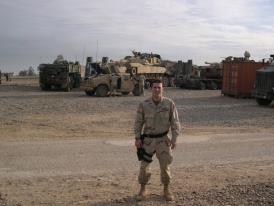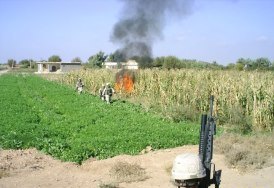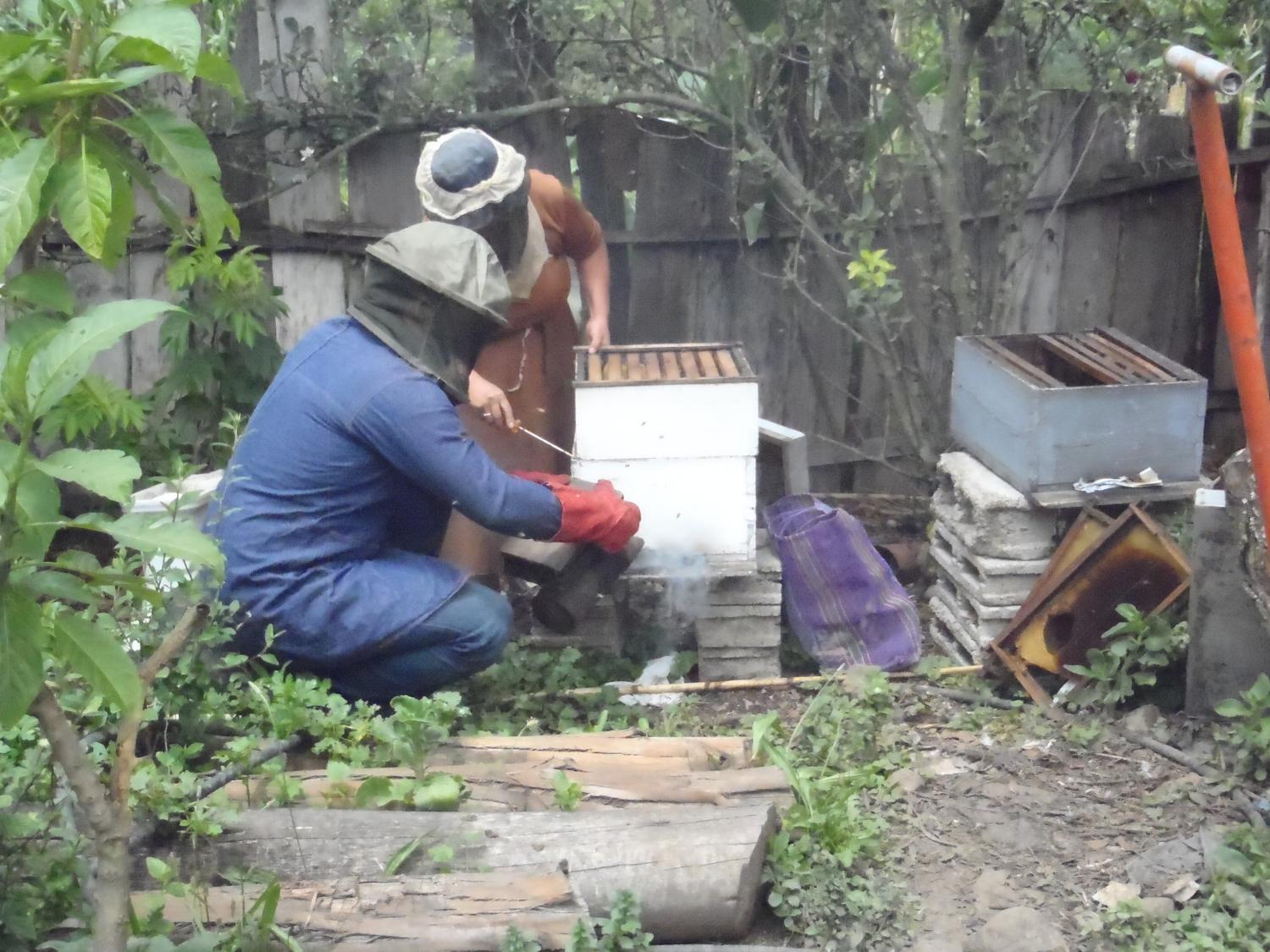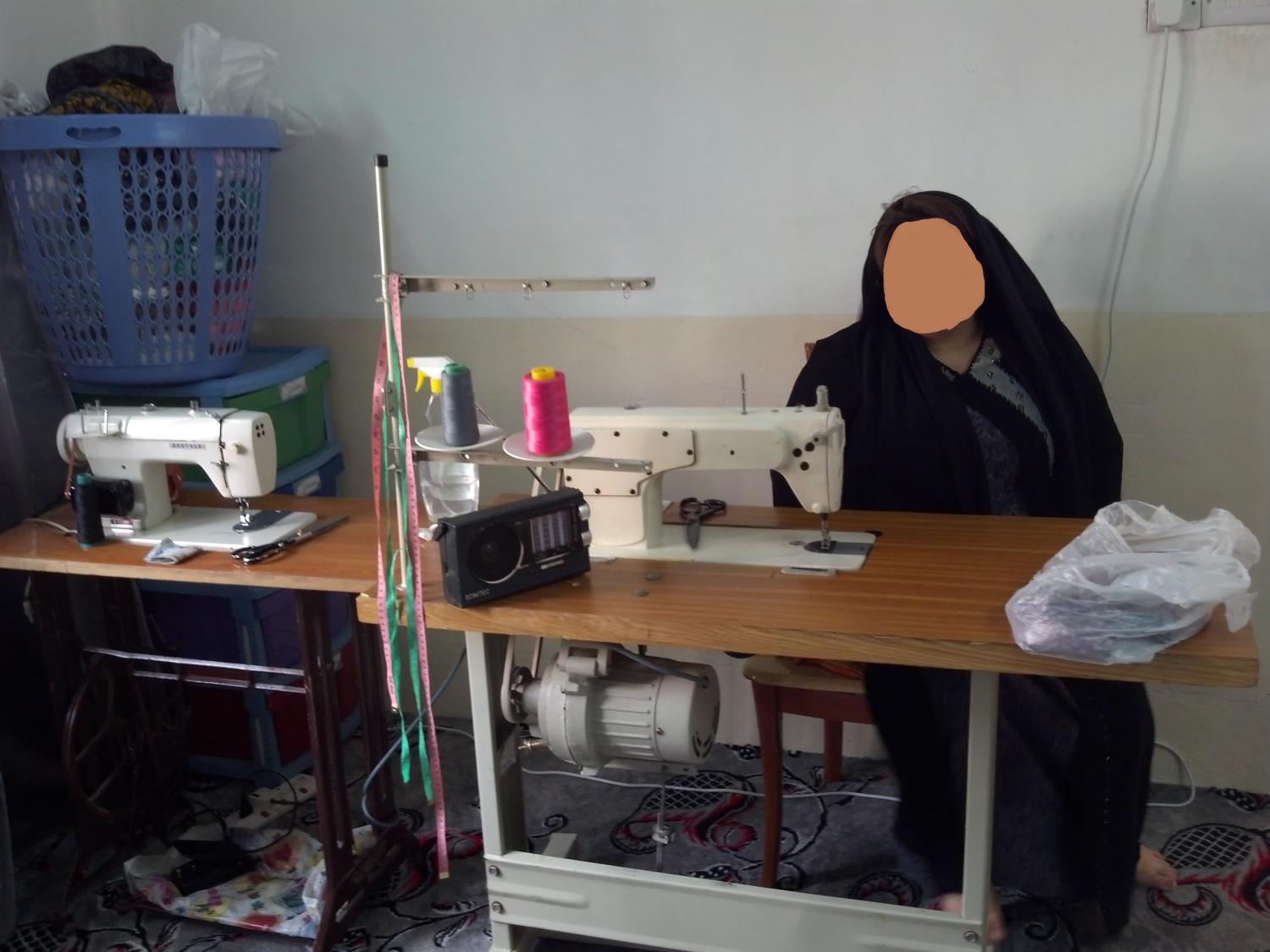

Kiva Fellow and author Leo Della-Moretta in his former life.
As a combat veteran, volunteering for Kiva in Ecuador is a dramatic shift from my previous professional experience. The driving factor for me to volunteer is the desire to help build something. All soldiers work and fight to protect their nations, their families, and their friends, but the reality is that we often do so by destroying people and things.
In contrast, Kiva is an institution that is enabling people around the world to build their communities and improve their lives. It's also believed to be one of the only organizations that actively injects capital into conflict zones (Kiva has partnered with microfinance institutions in Iraq). With that same mindset and goal, this article will try to explain how and why I believe microfinance can help move countries out of conflict and into social and economic development. This article is based solely on my personal experiences.

This is what your car looks like after you were blown up.
Brown everywhere. Choking on something. That is all I could see and feel for what seemed like an eternity. Then slowly, my eyes start to make out the outline of the windshield of my HMMWV through the brown. I thought to myself, “Yup, I just got blown up.”
My HMMWV had run over a landmine; the brown that I had seen was the dust that had been blown into the air. We identified a farmer across the street after establishing security around my now disabled vehicle. My headquarters chose to direct my men and I to burn the farmer’s crops. My headquarters’ reasoning was that he knew about the land mine and chose not to report it to us as we drove down the street straight toward it. While insurgents most likely threatened him against warning us, my headquarters felt that burning his crop, his livelihood, would incentivize him to report future threats to U.S. forces. Again, the reasoning was that the punishment was better than arresting him and taking him from his family.

Could micro-finance be a better way?
Some weeks later, my unit came to believe that the person who had placed the land mine was a “10 dollar a day insurgent,” i.e. someone who had no desire to attack us except for the fact that it paid a good salary. These “economic combatants” are arguably present in all wars, but their presence is greater in insurgencies. The author David Kilcullen explains this trend in his book "The Accidental Guerilla." Insurgencies produce environments where economic activity is stifled due to the risk of non-directed violence -- basically, anyone is a target. This is exacerbated by the fact that foreign capital is not invested in countries in turmoil because the risk to return on investment is seen to be as too high.
The paradox is that economic activity is one of the keys to turning a conflict zone into a post-conflict zone. The U.S. military acknowledged this when it published FM 3-24-2, Tactics in Counter Insurgency, paragraph 5-223. Additionally the U.S. military has launched multiple programs to help stimulate local economies in conflict zones. CERP is a prime example where money was used to stimulate the economy through infrastructure building. The U.S. government also recently published reports (Iraq and Afghanistan) showing how this money was not nearly as effective as it could have been.
The problems with the models used by the military can be, in my opinion, boiled down to two issues. The first is that the majority of investment the military made was in infrastructure projects, i.e. better roads and electrical networks. While this is an important component of recovery, it is not a silver bullet. The direct economic activity stimulated by these efforts is limited to the people hired to build the road. The potential for subsequent economic activity is limited due to the fact that capital is not introduced to the market for investment. This effect is lowered even further if the construction crew is not from the local area.
In fact, this effort has created the opposite effect in some areas of Afghanistan and Iraq. Remember the “$10 a day” fighter? Imagine how he feels. He has only been fighting because he needs the money. Then, the first time a good job comes to his community, the construction company isn’t hiring. That guy just went from a “$10 a day” fighter to a dedicated and angry belligerent.
The second issue is that the majority of economic activity stimulated by the U.S. military was through contracts to support its mission. Again, these contractors were not from the village/tribe/region where the U.S. forces were located. This can distort the local market and create an unsustainable environment. Basically, when the military leaves, so does the economic activity.
So how can microfinance help bring peace to conflict zones? By doing what it does everywhere else: introducing capital. When capital is provided directly to entrepreneurs, economic activity is stimulated in a manner that improves the local economy without inducing distortions. The fact that the capital must be paid back to keep it coming acts as a disciplining mechanism in concert with the return on investment incentive. Additionally, economic activity has a multiplier effect. When a market is created, others will enter it to compete for the benefits. This in turn provides opportunities and incentives to economic combatants to turn away from violence and toward improving their livelihoods through the local market. In the end, the “$10 a day” fighters have an incentive to work toward peaceful solutions.
If we take another look at my unit’s action in burning down crops after being attacked, another option becomes clear. Instead of penalizing the farmer for trying to stay neutral, and possibly push him toward becoming a paid insurgent, why not try to offer him a loan or other financial tools to expand his farm's economic potential? Once the farmer’s business gets better, his neighbors will want to improve their economic situation as well. The community itself may turn its back on violence so they can maintain the standard of living they have come to enjoy from the economic stimulus.
While volunteering in Ecuador, I have come across many people whose lives were improved through microfinance. One example is a beekeeper who, after multiple years of receiving and repaying microloans, now produces enough honey to support her family.

It’s clear that the conditions in Ecuador are not the same as those in conflict zones. But the benefits of microfinance can be exported to them, and I believe that microfinance activities can accelerate the move toward peace.
Kiva is currently partnered with two MFIs (Relief International and CHF International Access to Credit Services Initiatives) in Iraq. The current uptick in violence in Iraq highlights that there are no easy answers when dealing with conflict zones. That being said, I believe that the loans these Kiva borrowers have taken out will help, in a small way to move the country toward peace while improving their own lives.

A borrower in Iraq, identity obscured for her security.
PREVIOUS ARTICLE
Trustee Spotlight: KICK Trading - Recyclemania →NEXT ARTICLE
Introducing FUNDAPEC: Supporting Higher Education in the Dominican Republic →













